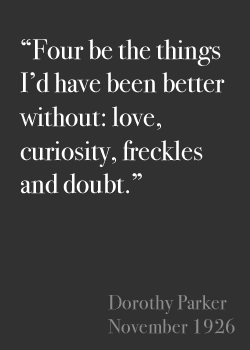Botox and the Art of Designing Empathy

We all know that the internet has its share of trolls – and likely always will.
But in the early days of SitePoint, we noticed an interesting trend: Articles with author faces beside them were almost always treated more fairly in the comments thread than those without.
We found writers using caricatures or cartoon avatars faired better than those with nothing. Writers using logos or non-facial graphics were much more likely to attract aggressive and impolite feedback.
That didn’t mean photographic avatars completely shielded the author from criticism – nor would you want it to. But criticism tended to be much more even-handed and constructive.
What’s happening here?

In a 2011 study for Social Psychological & Personality Science Journal, test subjects were asked to view a series of faces and then describe what emotion they saw in each face. The idea was to test their ability to imagine what another human is feeling – the characteristic we call empathy.
Although results naturally varied from person to person, most people showed good skill at correctly identifying the facial expression they saw.

The interesting part came when analyzing the video recording of each user test. High-speed cameras revealed that, before answering, each test user momentarily copied the expression they saw in the photo.
These so-called ‘microexpressions‘ were completely involuntary, unconscious and often barely perceptible to the naked eye, but seemed to help the subject make sense of what they were seeing.
The obvious question: what would happen if we blocked these microexpressions?
Botox is Only Skin Deep

A few months later, the same test subjects were treated with botox before sitting another round of testing. As you might know, botox works by paralyzing the small facial muscles around the eyes and mouth. This reduced the appearance of wrinkles but also works to block micro-expressions.
Amazingly, these ‘botoxed’ test subjects were significantly less able to interpret the faces they were seeing. Some kind of feedback loop was broken and their ability to empathize declined.
It seems that when we physically mimic a facial expression, it triggers a memory of what that emotion feels like. You could say, we get into their mind by getting into their face.
Building Empathy into our UIs

When we associate words with a nearby face, the ‘internal voice’ we hear when we read is changed. I’ve animated the example below to show this in action. This sublime Dorothy Parker quote is presented:
- as pure text
- beside a vibrant, glowing Parker
- beside a sad, almost broken Parker
You can see that the same quote feels quite different each time the imagery alters. Something changes in our head.
We all use lots of faces in our design work but I think there are two places where engaging user empathy is particularly useful.
- Any Kind of Editorial Text: Blogs, reviews, forums, comment threads, etc. Include a face any time you present ideas that you’d like your users to give attention and respect to. Obviously, a relaxed, confident smiling author is more likely to trigger relaxed, smiling, confident readers.
- Testimonials and Quotes: Testimonials are all about social proof. The more we can help a user with the testimonial author, the more weight they’ll place in the words.
The Catch
Everyone is a product of the world they grew up in and brings their own set of preferences and prejudices. It’s an imprecise science, but – if you have choice – displaying content from similar users to the reader (age, gender, and locality) is likely to get a more empathetic response.
And, of course, lay off botoxing your users (if you can).
Originally published in the SitePoint Design Newsletter.
Frequently Asked Questions (FAQs) about Botox and Empathic Design
How does Botox affect our ability to empathize?
Botox, a neurotoxin that is commonly used for cosmetic purposes, can potentially affect our ability to empathize. This is because it paralyzes the muscles that we use to express emotions, which can disrupt the feedback loop between our facial expressions and our feelings. This disruption can make it more difficult for us to understand and share the feelings of others, which is a key component of empathy.
What is empathic design and how is it related to Botox?
Empathic design is a user-centered design approach that involves understanding and addressing the users’ needs and experiences. It is related to Botox in the sense that Botox can potentially affect our ability to empathize, which can in turn impact how we design products and services. For instance, if a designer has difficulty empathizing due to Botox, they may struggle to understand and address the needs of their users.
Can Botox injections in the forehead change how our brains process emotions?
Yes, research suggests that Botox injections in the forehead can change how our brains process emotions. This is because these injections paralyze the muscles that we use to express emotions, which can disrupt the feedback loop between our facial expressions and our feelings. This disruption can alter how we perceive and respond to emotions.
How can empathic design spark innovation?
Empathic design can spark innovation by inspiring designers to create products and services that truly meet the needs and experiences of their users. By understanding and empathizing with their users, designers can identify unmet needs and opportunities for innovation that they may not have otherwise recognized.
Has Botox killed our capacity to empathize?
While Botox can potentially affect our ability to empathize, it is unlikely to completely kill our capacity to empathize. This is because empathy is a complex process that involves more than just our facial expressions. It also involves our ability to understand and share the feelings of others, which is not solely dependent on our facial expressions.
What is the role of empathy in design?
Empathy plays a crucial role in design. It allows designers to understand and address the needs and experiences of their users, which can lead to more effective and user-friendly products and services. Without empathy, designers may struggle to create products and services that truly meet the needs of their users.
Can Botox affect our emotional responses?
Yes, research suggests that Botox can affect our emotional responses. This is because it paralyzes the muscles that we use to express emotions, which can disrupt the feedback loop between our facial expressions and our feelings. This disruption can alter how we perceive and respond to emotions.
How can we use empathic design to improve our products and services?
We can use empathic design to improve our products and services by understanding and addressing the needs and experiences of our users. This involves observing and interacting with our users, empathizing with their experiences, and using this understanding to inform our design decisions.
Can Botox affect our ability to design empathically?
Potentially, yes. If Botox affects our ability to empathize, it could also affect our ability to design empathically. This is because empathic design involves understanding and addressing the needs and experiences of our users, which requires empathy.
What are the potential implications of Botox on our social interactions?
Botox can potentially affect our social interactions by affecting our ability to express and perceive emotions. This can make it more difficult for us to understand and share the feelings of others, which is a key component of social interactions.
Alex has been doing cruel and unusual things to CSS since 2001. He is the lead front-end design and dev for SitePoint and one-time SitePoint's Design and UX editor with over 150+ newsletter written. Co-author of The Principles of Beautiful Web Design. Now Alex is involved in the planning, development, production, and marketing of a huge range of printed and online products and references. He has designed over 60+ of SitePoint's book covers.
Published in
·Conversion·Design·Design & UX·Entrepreneur·Prototypes & Mockups·Testing·UI Design·Usability·UX·March 29, 2016
Published in
·Conversion·Design·Design & UX·Illustration·Testing·UI Design·Usability·UX·April 13, 2016

Published in
·Conversion·Design·Design & UX·Email Marketing·Testing·UI Design·Usability·UX·May 30, 2017




